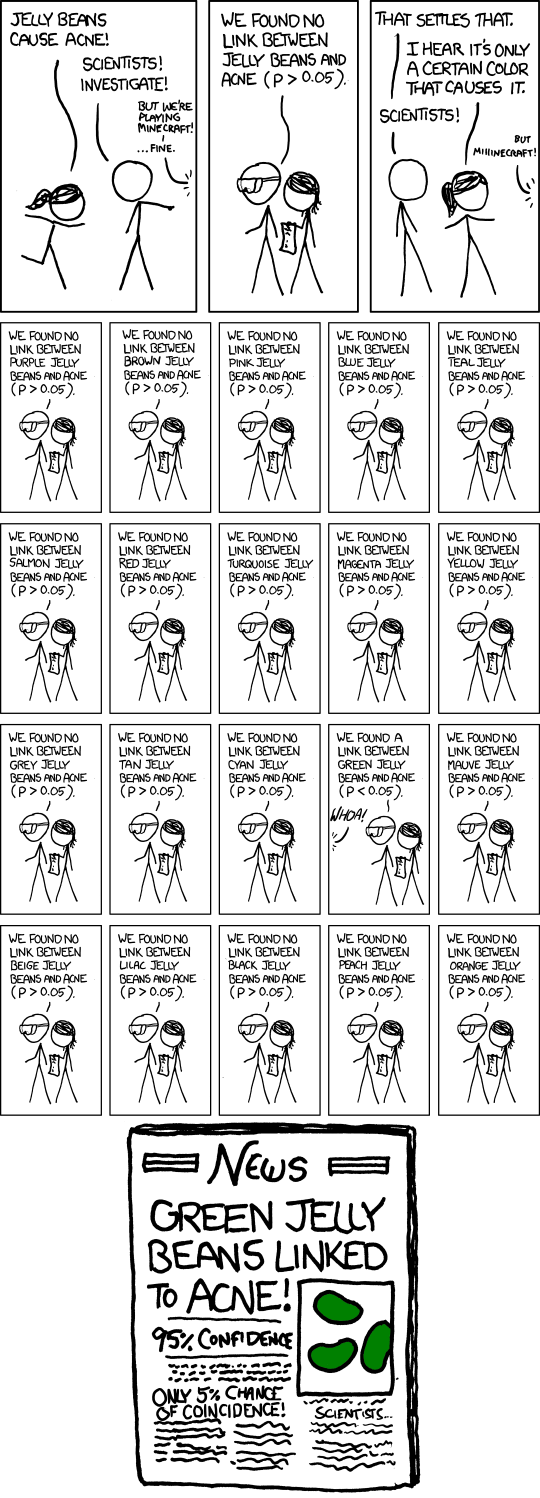That would have been bad science. They did not have enough data to say it was "probably due to randomness".
The whole point is that they didn't have enough data to say ANYTHING.
Ok... First off, the Monsanto studies aren't any icon of 'proper science', but that doesn't mean Selanini's paper isn't misleading crap.
Selanini gives a shitload of various
observations... The problem is that the experimental design (or lack there-of) did not produce nearly enough real data to draw statistically reasonable inferences and turn those into
results. For the conclusions he is trying to draw, the 'data' he presents is really no better than anecdotes.
It would have been reasonable if he concluded that the protocols Monsanto used were insufficient to statistically rule out long-term toxicity and mutagenesis/carcenogen, but he tries to go a lot farther than that. In fairness, pretty much everyone who isn't paid by a big agribuisness corp already says the protocols used for FDA approval studies are insufficient... so Selanini's paper wouldn't have any sort of impact if that is all he said.
Monsanto's goal was to just tick a regulatory box, so they did what the regulator required and no more.
Given how his study is designed, Selanini's goal seems like it started off just trying to show that what Monsanto (and others) are required to do testing wise is insufficient. As I said, that is a fine thing to do. However, he presents his data in a way which appears designed to mislead: Implying there are dramatic results when there aren't any. What he didn't do was conduct a reasonable a longer-term toxicology study, nor did he do a cancer study. Yet, he wrote his conclusion as if that was what he did.
BTW: The "cancer study" thing is a bit funny and sad. He does say, up-front, that it isn't a cancer study, because cancer studies have standards he doesn't come close to meeting. However, counts of tumors are probably his most hyped data... Which means what? I can't see any other possibilities than stupidity or dishonesty.
PS: In the US we start with the presumption that, from the POV of something being food at least, (most) GMOs are essentially identical to the strain they are derived from. That is a fairly sensible position... Not perfect, but not obviously stupid either. Most GMOs vary a lot less from their parent strain than new strains derived through non-GMO methods do. The way a GMO varies is also much more known and controlled than the products of non-GMO breeding.
There are flaws with this presumption, but those flaws are not GMO specific. If you're really worried about novel health risks from GMOs, an organic locally bred 'heirloom' strain should scare the shit out of you.


